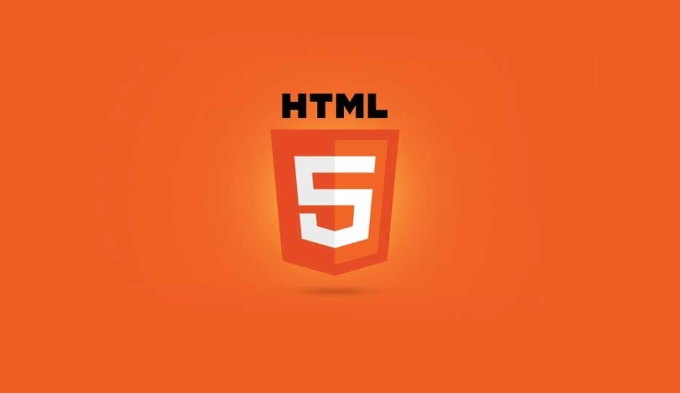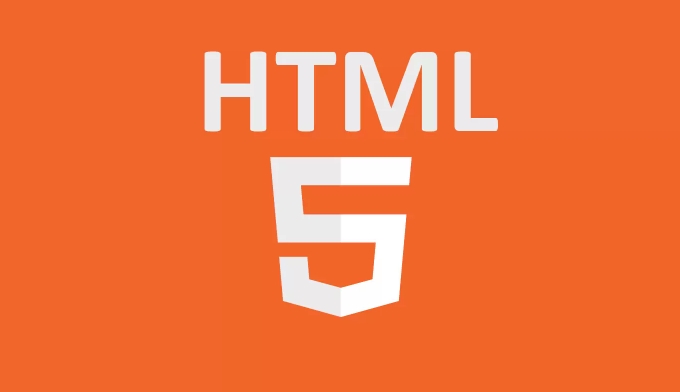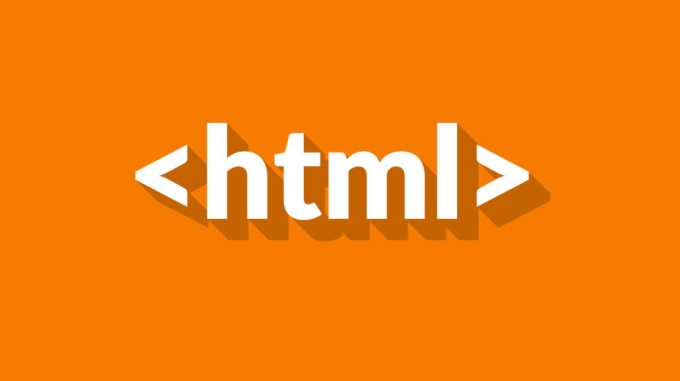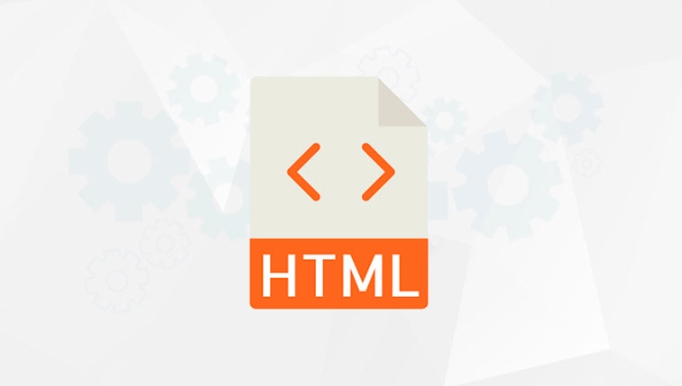How to group heading elements with hgroup in HTML
Aug 03, 2025 am 03:34 AM); 4. Or use styled paragraphs (
<p>) as subtitles to maintain semantic clarity; 5. For complex scenarios, you can use <header> combined with ARIA and other semantic methods. Therefore, avoid using <hgroup> and use simpler, accessible and widely supported solutions. <p> <p> The
<p> The <hgroup></hgroup> element in HTML was designed to group heading elements together—like a main heading and a subheading—so they're treated as a single unit in the document outline. However, its use has changed over time due to updates in the HTML specification.

What <hgroup></hgroup> was meant for
<p> Originally, <hgroup></hgroup> was introduced in HTML5 to wrap a heading (like <h1></h1> ) along with its subheadings (like <h2></h2> , <h3></h3> , etc.) without creating multiple sections in the document outline. For example:<hgroup> <h1>Main Title</h1> <h2>Subtitle or Tagline</h2> </hgroup><p> In this case, the idea was that only the
<h1> would appear in the document's outline, and the <h2> would be considered part of that same heading block, not a separate section.  <p> This helped avoid cluttering the document structure when you wanted visual hierarchy (like a subtitle) without affecting the logical outline.
<p> This helped avoid cluttering the document structure when you wanted visual hierarchy (like a subtitle) without affecting the logical outline. Why <hgroup> is no longer recommended
<p> As of recent updates to the HTML specification (around 2013), the <hgroup> element was removed from the official standard because it didn't solve the problem as effectively as intended. Tools like screen readers and search engines already handled subheadings well without it, and the element added confusion rather than clarity.  <p> Now, the WHATWG (the group maintaining the living HTML standard) no longer supports
<p> Now, the WHATWG (the group maintaining the living HTML standard) no longer supports <hgroup> , and most modern accessibility tools ignore it.Better alternatives today
<p> Instead of using<hgroup> , here are recommended approaches:- <p> Use headings with proper hierarchy
Just use<h1>and<h2>normally. If a subtitle is part of the same section, it's OK for it to appear in the outline.<h1>Main Title</h1> <h2>Subtitle or Supporting Line</h2>
- <p> Use a paragraph with styling
Make the main title an<h1>, and use a styled<p>for the subtitle:<h1>Main Title</h1> <p class="subtitle">A descriptive subtitle goes here</p>
<p> This keeps the document outline clean and give full control over styling and semantics. - <p> Use ARIA or other semantic elements if needed
For complex titles (eg, in article headers), wrap them in a<header>and use appropriate roles if necessary:<header> <h1>Main Title</h1> <p>Published on January 1st, 2025</p> </header>
Bottom line
<p> Don't use<hgroup></hgroup>. It's obsolete and not supported in current HTML standards. Instead, rely on proper heading levels or use paragraphs with CSS to style subtitles. This approach is more accessible, future-proof, and widely supported. <p> Basically, keep it simple: use headings where needed, and non-heading elements for supplementary text.The above is the detailed content of How to group heading elements with hgroup in HTML. For more information, please follow other related articles on the PHP Chinese website!

Hot AI Tools

Undress AI Tool
Undress images for free

Undresser.AI Undress
AI-powered app for creating realistic nude photos

AI Clothes Remover
Online AI tool for removing clothes from photos.

Clothoff.io
AI clothes remover

Video Face Swap
Swap faces in any video effortlessly with our completely free AI face swap tool!

Hot Article

Hot Tools

Notepad++7.3.1
Easy-to-use and free code editor

SublimeText3 Chinese version
Chinese version, very easy to use

Zend Studio 13.0.1
Powerful PHP integrated development environment

Dreamweaver CS6
Visual web development tools

SublimeText3 Mac version
God-level code editing software (SublimeText3)
 The `` vs. `` in HTML
Jul 19, 2025 am 12:41 AM
The `` vs. `` in HTML
Jul 19, 2025 am 12:41 AM
It is a block-level element, used to divide large block content areas; it is an inline element, suitable for wrapping small segments of text or content fragments. The specific differences are as follows: 1. Exclusively occupy a row, width and height, inner and outer margins can be set, which are often used in layout structures such as headers, sidebars, etc.; 2. Do not wrap lines, only occupy the content width, and are used for local style control such as discoloration, bolding, etc.; 3. In terms of usage scenarios, it is suitable for the layout and structure organization of the overall area, and is used for small-scale style adjustments that do not affect the overall layout; 4. When nesting, it can contain any elements, and block-level elements should not be nested inside.
 Specifying Character Encoding for HTML Documents (UTF-8)
Jul 15, 2025 am 01:43 AM
Specifying Character Encoding for HTML Documents (UTF-8)
Jul 15, 2025 am 01:43 AM
To correctly set the character encoding of the HTML document to UTF-8, you need to follow three steps: 1. Add at the top of the HTML5 part; 2. Configure the response header Content-Type: text/html; charset=UTF-8, if Apache uses AddDefaultCharsetUTF-8, Nginx uses charsetutf-8; 3. Select the UTF-8 encoding format when saving HTML files in the editor. These three links are indispensable, otherwise it may lead to garbled page code and failure of special character parsing, affecting user experience and SEO effect. It is important to ensure that HTML declaration, server configuration and file saving are consistent.
 Essential HTML Tags for Beginners
Jul 27, 2025 am 03:45 AM
Essential HTML Tags for Beginners
Jul 27, 2025 am 03:45 AM
To get started with HTML quickly, you only need to master a few basic tags to build a web skeleton. 1. The page structure is essential, and, which is the root element, contains meta information, and is the content display area. 2. Use the title. The higher the level, the smaller the number. Use tags to segment the text to avoid skipping the level. 3. The link uses tags and matches the href attributes, and the image uses tags and contains src and alt attributes. 4. The list is divided into unordered lists and ordered lists. Each entry is represented and must be nested in the list. 5. Beginners don’t have to force memorize all tags. It is more efficient to write and check them while you are writing. Master the structure, text, links, pictures and lists to create basic web pages.
 Is the tag still used in HTML5?
Jul 21, 2025 am 02:47 AM
Is the tag still used in HTML5?
Jul 21, 2025 am 02:47 AM
Yes, it is part of HTML5, but its use has gradually decreased and is controversial. Used to combine the main title with the subtitle so that only the highest level of titles are identified in the document outline; for example, the main title and subtitle can be wrapped in to indicate that they are only auxiliary titles rather than independent chapter titles; however, reasons why they are no longer widely used include: 1. The browser and screen readers are inconsistent support for them, 2. There are simpler alternatives such as using CSS to control styles, 3. The HTML document outline algorithm is not widely supported; despite this, it can still be considered in websites or documents with high semantic requirements; while in most cases, developers tend to use a single, manage styles through CSS and maintain clear title levels.
 Shadow DOM Concepts and HTML Integration
Jul 24, 2025 am 01:39 AM
Shadow DOM Concepts and HTML Integration
Jul 24, 2025 am 01:39 AM
ShadowDOM is a technology used in web component technology to create isolated DOM subtrees. 1. It allows the mount of an independent DOM structure on ordinary HTML elements, with its own styles and behaviors, and does not affect the main document; 2. Created through JavaScript, such as using the attachShadow method and setting the mode to open; 3. When used in combination with HTML, it has three major features: clear structure, style isolation and content projection (slot); 4. Notes include complex debugging, style scope control, performance overhead and framework compatibility issues. In short, ShadowDOM provides native encapsulation capabilities for building reusable and non-polluting UI components.
 Why is my image not showing up in HTML?
Jul 28, 2025 am 02:08 AM
Why is my image not showing up in HTML?
Jul 28, 2025 am 02:08 AM
Image not displayed is usually caused by a wrong file path, incorrect file name or extension, HTML syntax issues, or browser cache. 1. Make sure that the src path is consistent with the actual location of the file and use the correct relative path; 2. Check whether the file name case and extension match exactly, and verify whether the image can be loaded by directly entering the URL; 3. Check whether the img tag syntax is correct, ensure that there are no redundant characters and the alt attribute value is appropriate; 4. Try to force refresh the page, clear the cache, or use incognito mode to eliminate cache interference. Troubleshooting in this order can solve most HTML image display problems.
 HTML `style` Tag: Inline vs. Internal CSS
Jul 26, 2025 am 07:23 AM
HTML `style` Tag: Inline vs. Internal CSS
Jul 26, 2025 am 07:23 AM
The style placement method needs to be selected according to the scene. 1. Inline is suitable for temporary modification of single elements or dynamic JS control, such as the button color changes with operation; 2. Internal CSS is suitable for projects with few pages and simple structure, which is convenient for centralized management of styles, such as basic style settings of login pages; 3. Priority is given to reuse, maintenance and performance, and it is better to split external link CSS files for large projects.
 Can you put a tag inside another tag?
Jul 27, 2025 am 04:15 AM
Can you put a tag inside another tag?
Jul 27, 2025 am 04:15 AM
?Youcannotnesttagsinsideanothertagbecauseit’sinvalidHTML;browsersautomaticallyclosethefirstbeforeopeningthenext,resultinginseparateparagraphs.?Instead,useinlineelementslike,,orforstylingwithinaparagraph,orblockcontainerslikeortogroupmultipleparagraph






